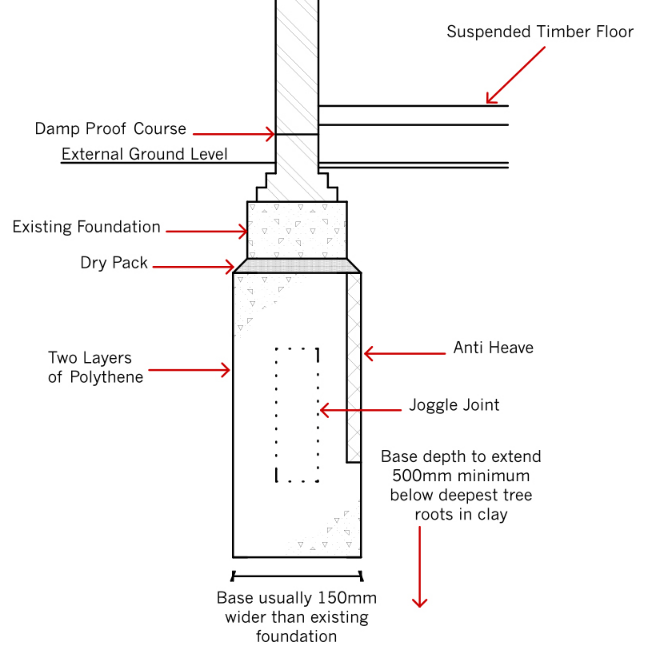Underpinning Concrete Slab
an extremely useful material for flooring purposes. Its tensile strength, resilience to extreme temperatures, and inherent soundness make it perfect for use in structures that are reinforced by rebar. Additionally it is durable enough to keep the burden of heavier vehicles as well as people. On the downside, concrete doesn’t lend itself very well to creative designs on the grounds of layout patterns. This issue is exacerbated by the fact that concrete can’t be formed into any elaborate patterns. For all these reasons, the process of laying out a concrete slab has traditionally been thought of as relatively hard.
Underpinning Concrete Slab
However, advances from the concrete sector have made the process of putting an abysmal concrete slab a far easier one. New machines and applications have made the process easy enough that virtually anyone with a reasonable quantity of construction know-how can attempt the task. With this type of equipment and applications, there’s currently no need to consult experts when it comes to placing an underpinning concrete slab. With only a little bit of effort, you can do the job yourself and save time and money.
Underpinning Concrete Slab
The first step to getting started would be to purchase or lease a trowel. This is a unique heavy duty tool which will be necessary for the entire duration of this job. Because the slab is to be put so deeply, you need to ensure that you have a firm grip even after implementing the concrete binder. Then, lay the slab on the prepared underlayment. You may choose to put some tiny pebbles along the perimeter to provide a smooth finish.
Underpinning Concrete Slab

You can now begin excavating around the outside of the slab. The target is to make a very deep hole for the concrete to pour into. Keep in mind that you should just install the slab around the underlayment, not on the floor. This is because if you pour the concrete into the pit, the strain will get the concrete to expand. So, ensure that the slab is installed directly onto the sub-floor.
Underpinning Concrete Slab
Once the hole is deep enough, pour the concrete melbourne underpinning into the pit. The next step is to set up the slab around the underlayment in line with the manufacturer’s directions. Most concrete mixers will have instructions published somewhere close to the canister or the product itself. Follow these directions carefully to prevent end up with broken concrete concrete. Make sure the underpinning concrete slab is even all of the way round – that will make certain that the concrete does not leak.
Make sure the concrete is entirely across the bottom of the slab. Lay another layer of this underlayment over the first layer and then add the upcoming concrete slab. Continue in this fashion until all the concrete has been added. After you’ve completed this, you are all set to place the insulation layer above the slab. When installing insulation, be certain that the cut corner is slightly slanted and the insulation is put in even layers all the way across the floor.
Insulation ought to be implemented according to the manufacturer’s instructions – do not skip any measure. As soon as you’ve applied the insulation, the last thing you have to do would be to put down the moisture barrier. This is essential as it will avoid the slab from becoming damaged by water leaking below it. The moisture barrier will also aid in keeping your slab cool through the summer. Make sure you have followed all of the steps correctly, and your concrete flooring is now ready to use.
Installing an underpinning concrete slab isn’t as easy as what you might think that it is. There are many things that you need to consider such as the height of the slab, how deep you want it to be dropped out of, the width of the distance in which you want it to be set up along with the total amount of insulation you want applied. However, with these few basic tips in your mind, you’ll have the ability to install your own underpinning concrete for your slab. What exactly are you waiting for?